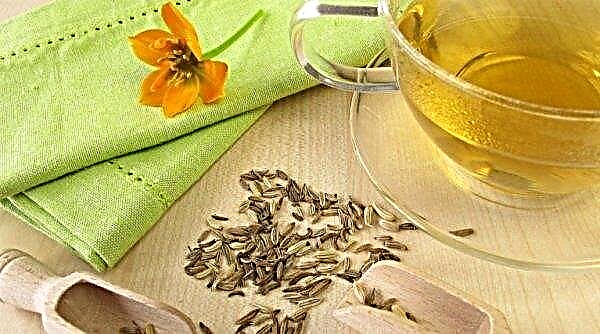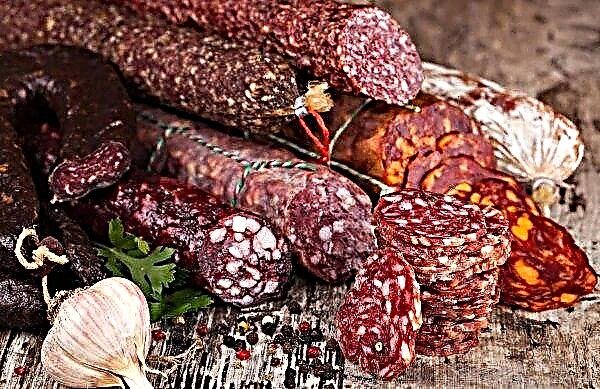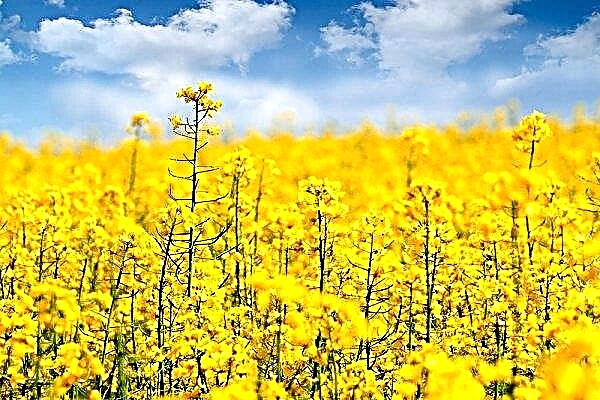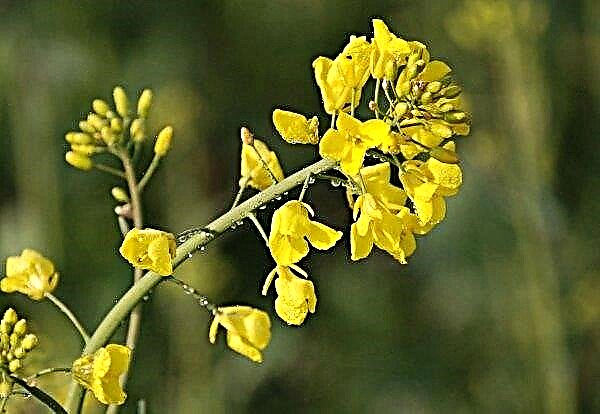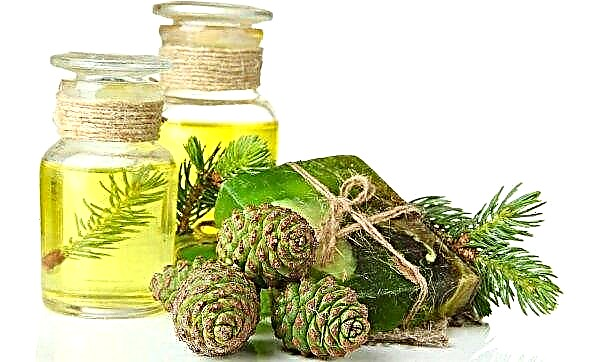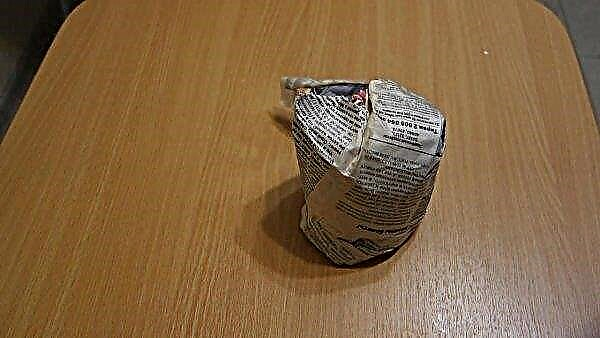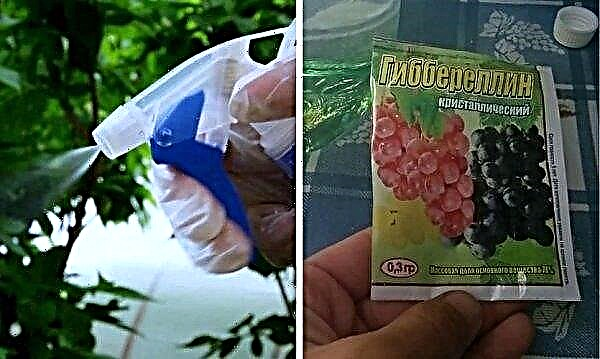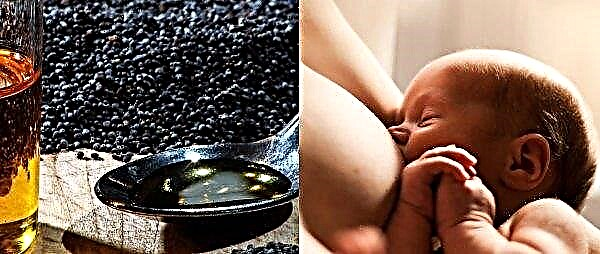Decorative trees are often planted in personal plots in order to create a special and unique appearance, the so-called landscape design. They give a modern look to gardens, squares, parks. Mountain pine varieties Carstens Wintergold or Pinus mugo Carsten (or Carstens) Wintergold is considered an unusual shrub. It has a special bright yellow, and sometimes an orange color, and a small height. The tree is considered to be evergreen, and therefore in the autumn and winter season it is able to decorate any place with its appearance.
Biological Description of the Variety
The decorative mountain pine Carstens Winter Gold was created artificially. She was selected in Holland in 1969. Initially, it could grow only in the Netherlands. After some time in Europe, they learned to create suitable conditions for its growth. Therefore, pine gained popularity in the southern and central countries. Now it is found in almost all climatic zones of Russia.
The tree is not picky about the composition of the soil. It feels great on sandy and sandy loamy soils. He loves moisture, although it also develops well in its absence. It can grow successfully on soils that are low in nutrients. It develops well in acidic soil.
Wintergold variety is considered slow-growing. In addition, pine rarely grows above 1 m to a decade old. Therefore, it is characterized as a dwarf variety. In one season, it can grow no more than 4 cm. The maximum width of the tree is approximately 1.5 m.
The main and unique feature of the variety is that the needles change their color depending on the season. So, in the winter it can turn bright orange, and in the summer - pale yellow. Mountain pine is resistant to frost. Unpretentious to the composition of the soil and watering. It withstands even strong gusts of wind.
Important! It is believed that for proper growth, in winter, the temperature should not fall below -35 ° C. Although the tree adapts perfectly in any climate.
An external description can be represented as follows:
- Crohn's shape resembles a ball. She always remains fluffy and thick. The needles are hard and sharp, but short. In a bunch no more than 2 needles are located.
- The branches are strictly vertical. They are located on a tree rather densely. Almost spread along the ground.
- Young trees have a smooth bark. It has a grayish, brown or dark gray color. With age, the bark begins to crack. Flakes form on it.
- Cones are always round and small in size. It is rare to find specimens larger than 5 cm in diameter. They have a dark brown color.
- Rhizome is well developed. They are open and branched. Usually located near the surface, but can penetrate deeper into the bowels of the earth.
 Pine of this variety is immune to many common diseases and pests of conifers.
Pine of this variety is immune to many common diseases and pests of conifers.
Use in landscape design
A short tree is often used in landscape design. It can be found both in single and in group composition.
Usually, with the help of pine, decorate:
- Alpine hills and rockeries;
- borders
- fencing;
- balconies;
- lawns;
- loggias;
- terraces;
- stony soil on the slopes;
- places for rest;
- stone gardens;
- sculptural compositions;
- hedges;
- fountains;
- walls of buildings.
Mountain pine Carstens Wintergold often planted near other plants. It can be vertical flowers, fruit bushes, deciduous or coniferous trees. It is considered a very suitable background for stunted plants. If you create a group planting, then the pine is placed in the first line due to the low height in adulthood.

Landing
For planting Wintergold pine varieties, strict observance of the established rules will be required. An ideal area with rocky and sandy soil. At the same time, it should be well lit by the sun during the day.
Video: Pine Mountain Winter Gold
Seedling Selection
To select the suitable seedlings, it is best to go to a specialized nursery. Sometimes planting material can be found in markets or agricultural stores. Less commonly, seedlings are ordered online.
As a planting material, two or three year old trees are suitable. They are well rooted in a new place.

When to plant
Planting of selected seedlings can be carried out twice a year. The first time span falls in the spring, namely April or May. A prerequisite is a well-warmed soil. The second time period is the beginning of autumn. Usually this is the end of August and the beginning of September. Less often, the landing is postponed to the beginning of October. But, in this case, there is a chance of premature frost. They will adversely affect the development of the bush.
Important! In emergency situations, it is allowed to transplant plants in the winter. But their age should be more than 10 years.
Site selection and preparation
Pine can grow in almost any corner of the garden. The only essential condition is the probable need for acidification of the soil by artificial methods. Therefore, the site is selected in advance.
On it create a depression in the ground. It is recommended to do this only after acquiring a seedling, since its diameter should be proportional to the root system. A layer of drainage is placed at its bottom.. Its height should be approximately 20 cm. Most often used is large gravel or broken brick.

The drainage system is important when planting is carried out in wet or heavy soil.. In this case, still a small amount of sand is poured on top. If the soil is completely sandy, then it is diluted with a small amount of clay.
Phased landing
In the process of planting a seedling, it is necessary to save on it a lump of land, which is removed from the container.
The phasing of actions during landing is as follows:
- A pine root system is installed in a previously created and prepared hole. They fill it with a composition of soddy soil and sand. Their ratio should be 2: 1. The amount depends on two important conditions - the unhindered passage of air and water, and lightness.
- The earth falls asleep only to the level of the basal neck. It is allowed, and even desirable, to slightly raise it.
- A layer of the substrate, filled in the pit, tamped. Make a moderate amount, about 2 buckets, of water.

Care
The main advantage of this mountain pine variety lies in the fact that it does not require special or thorough care. Nevertheless, the minimum recommendations for the process of irrigation, fertilizing, preparation for the winter season, the treatment of diseases and pests are still required to be observed.
Did you know? In ancient Egypt, pine resin was used for embalming. The found sarcophagus with the remains of tarred tissue indicates that after 3,000 years it retained its bactericidal properties.
Watering and feeding
The tree does not like frequent watering. Therefore, according to the instructions, a small list of stages of the procedure has been compiled:
- Immediately after planting, a plentiful amount of water is introduced into the trunk circle.
- The first month after disembarkation, it is necessary to apply the liquid 1 time per week. At the same time, approximately 2 buckets of water are applied under one seedling.
- After this, the irrigation procedure can be omitted at all. Pine will have enough moisture coming from rain and groundwater. The only period when water is still needed is a long summer drought.
 A distinctive feature of conifers is that they tolerate the absence of moisture
A distinctive feature of conifers is that they tolerate the absence of moisture
Mountain pine does not need frequent feeding procedures. For her, timely introduction during the first 3 years from the moment the growth stimulant is planted will be sufficient. The optimal amount is considered to be 35 g per 1 m². A mature plant grows strong and independent. Therefore, further feeding is carried out in emergency cases.
Sometimes, especially when the soil is not acidic, it must be artificially acidified. An alternative is manure. In this case, the pine will also receive useful trace elements.
To do this, you can use several of the most common ways, namely:
- Creating a layer of mulch from spruce branches or sawdust of conifers.
- Dilution in water of acids. Suitable for this is the usual food lemon or sorrel. Also, vinegar is often used.
- Sometimes you can increase the acidity level of the soil with garden sulfur.
Winter preparations
Wintergold variety requires special preparation for the winter season only in the first stages of growth. A young seedling can suffer from frost, so it has to be additionally protected by artificial means.
Among the protective measures often found:
- Shelter creation. Used burlap, spruce this year, non-woven agrofibre. For the winter they literally wrap a tree.
- Binding. Older trees grow heavily. Sometimes, under the weight of the snow, they can break. Therefore, they are tied to the trunk with a cord or wire.
- Snow removal. These sediments usually accumulate in large numbers between branches and a tree trunk. Since it is capable of reflecting sunlight, in some rare cases it can burn sensitive shoot bases.
- Dusting. The icy layer of moisture, which often appears on the bark after slight warming, can have a detrimental effect on the plant. To prevent its formation, branches and trunk are sprinkled with a small amount of land or peat. In the future, this leads to a safe thawing of ice without any risk to the crust.
 In the spring, when the winter cold completely recedes, and there will be no frost, the earth is poured with warm water
In the spring, when the winter cold completely recedes, and there will be no frost, the earth is poured with warm water
Disease Prevention and Treatment
First of all, you need to understand that Carstens Wintergold pine has excellent immunity to diseases and pests. The most dangerous ailment is considered a fungal infection, which is called shute. Its main features are:
- the appearance of characteristic black spots on the branches, which eventually cover the entire surface;
- withering and drying of needles with subsequent shedding.

To treat and prevent this, like any other fungal disease, a fungicide is used.. This is a special antifungal chemical. Bordeaux liquid is considered the most popular in Russia. In addition, its cost is minimal.
The most common pest not only of mountain pine, but also of any coniferous tree, is considered hermes. This is a subspecies of aphids that feeds exclusively on the sap of these plants. To combat it, any available drug is used in stores, for example, "Sodium humate." The presence of the pest is identified by the characteristic white coating on the needles, as well as the slowdown of pine development.

Pretty rare, but the tree can still infect ticks and bark beetles. The above insecticide will help in this case.
As prevention, you can also use drugs whose names are listed above. Also, any available acaricide that helps get rid of ticks is recommended. One of the most popular drugs is considered "Actellic."
Did you know? The older the pine, the higher its resin is rated. It makes a valuable stone called amber.
Based on the above material, it becomes clear that the Carstens Wintergold mountain pine is unpretentious both when planting and when leaving. It can be used to create a wide variety of decorative compositions in landscape design. And resistance to frost, pests and diseases makes it a unique option to decorate a garden or summer cottage. At the same time, the variable color of the pine will allow you to admire the plant year-round.

